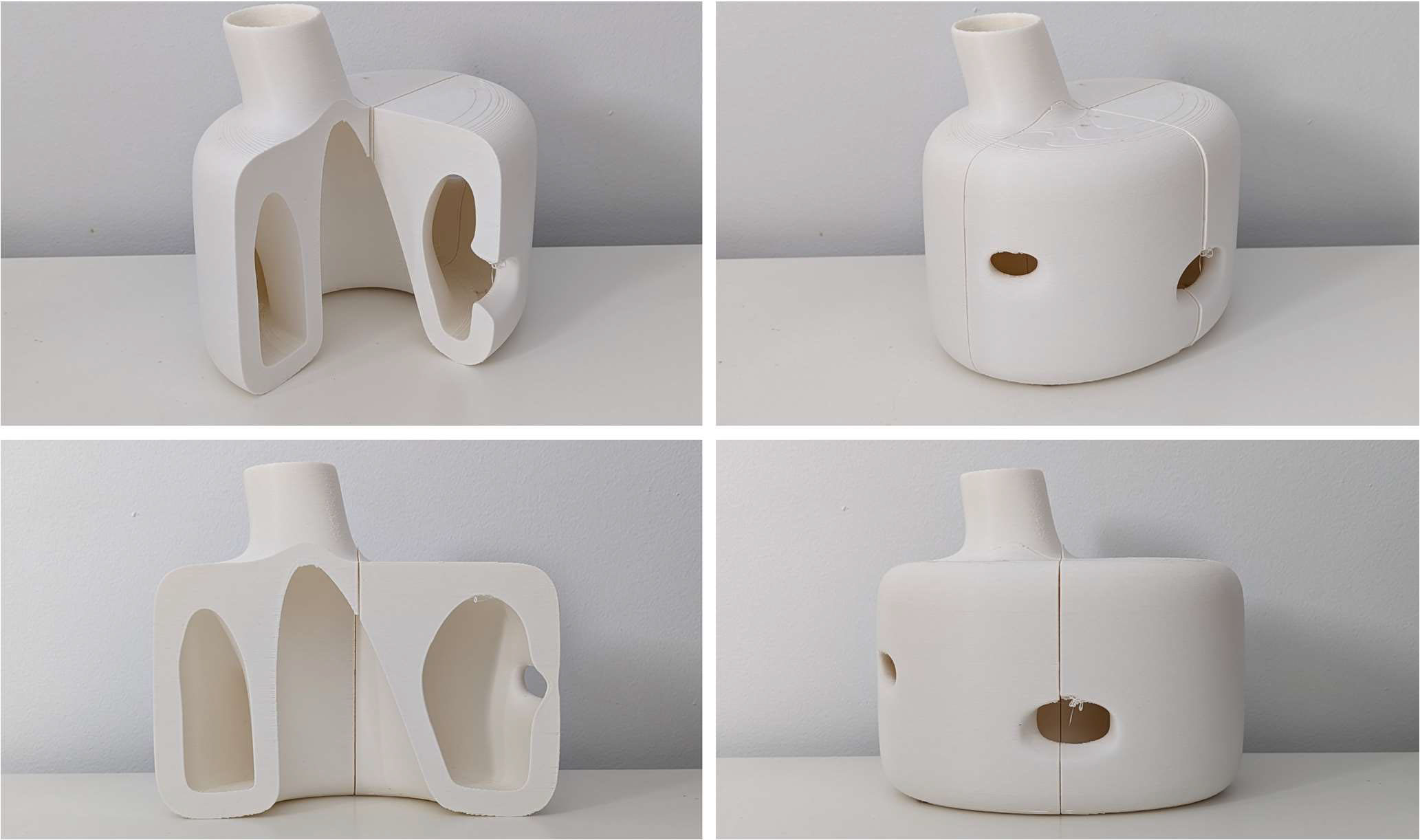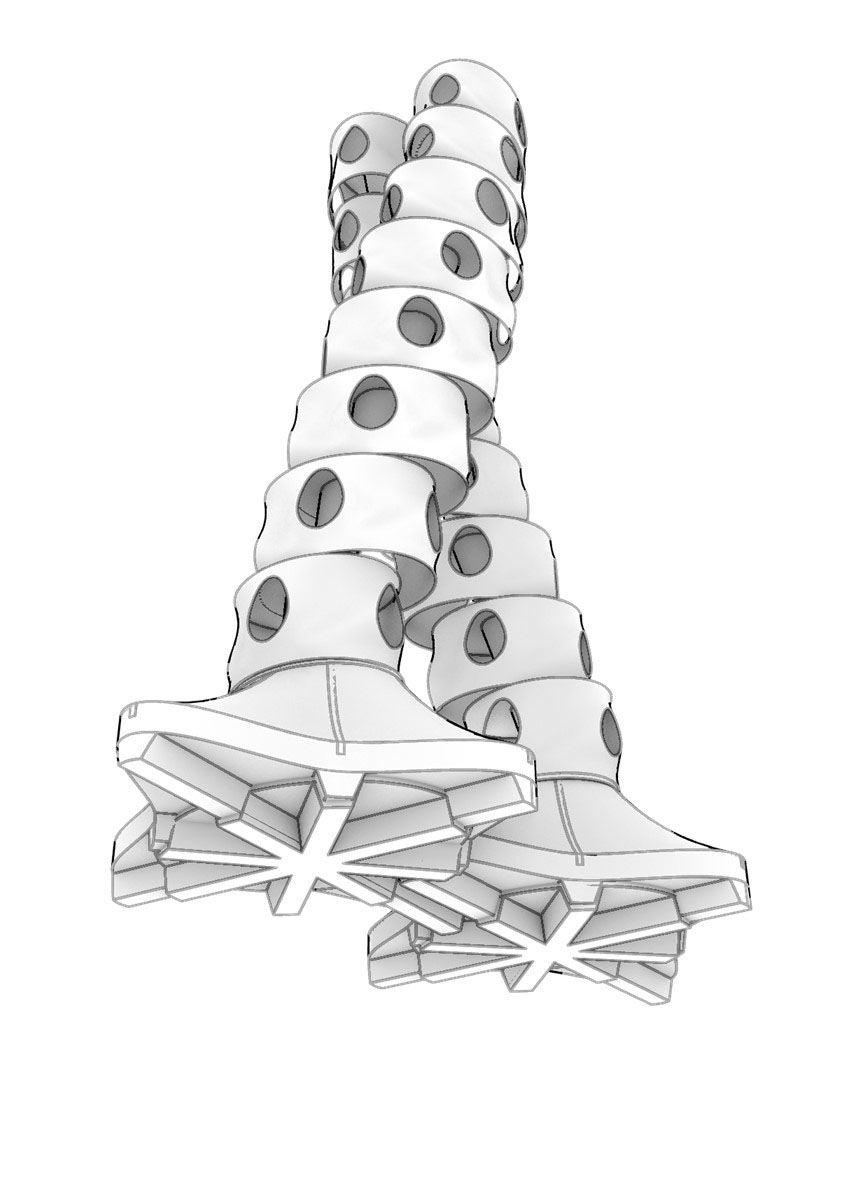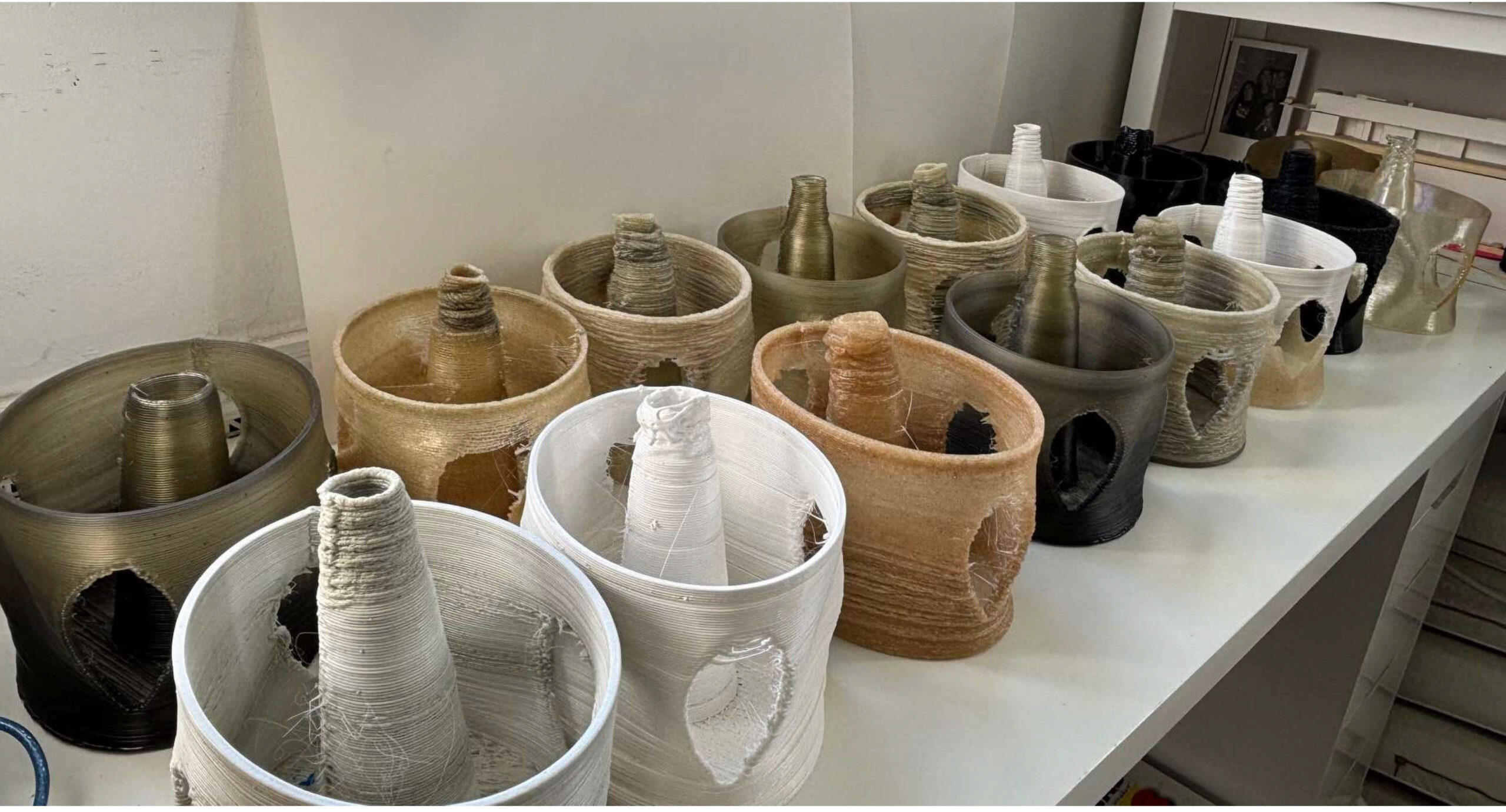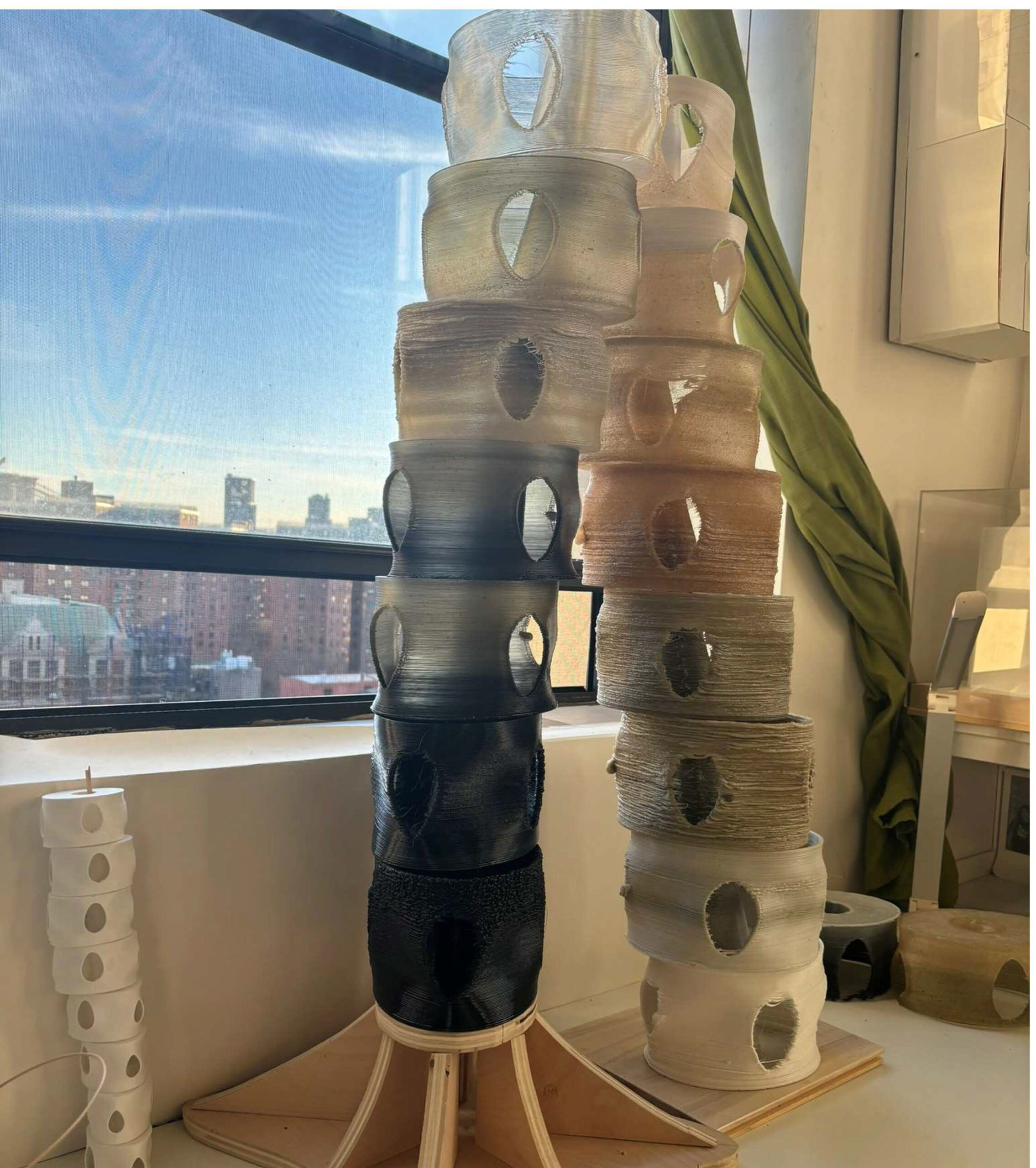Multispecies Totem
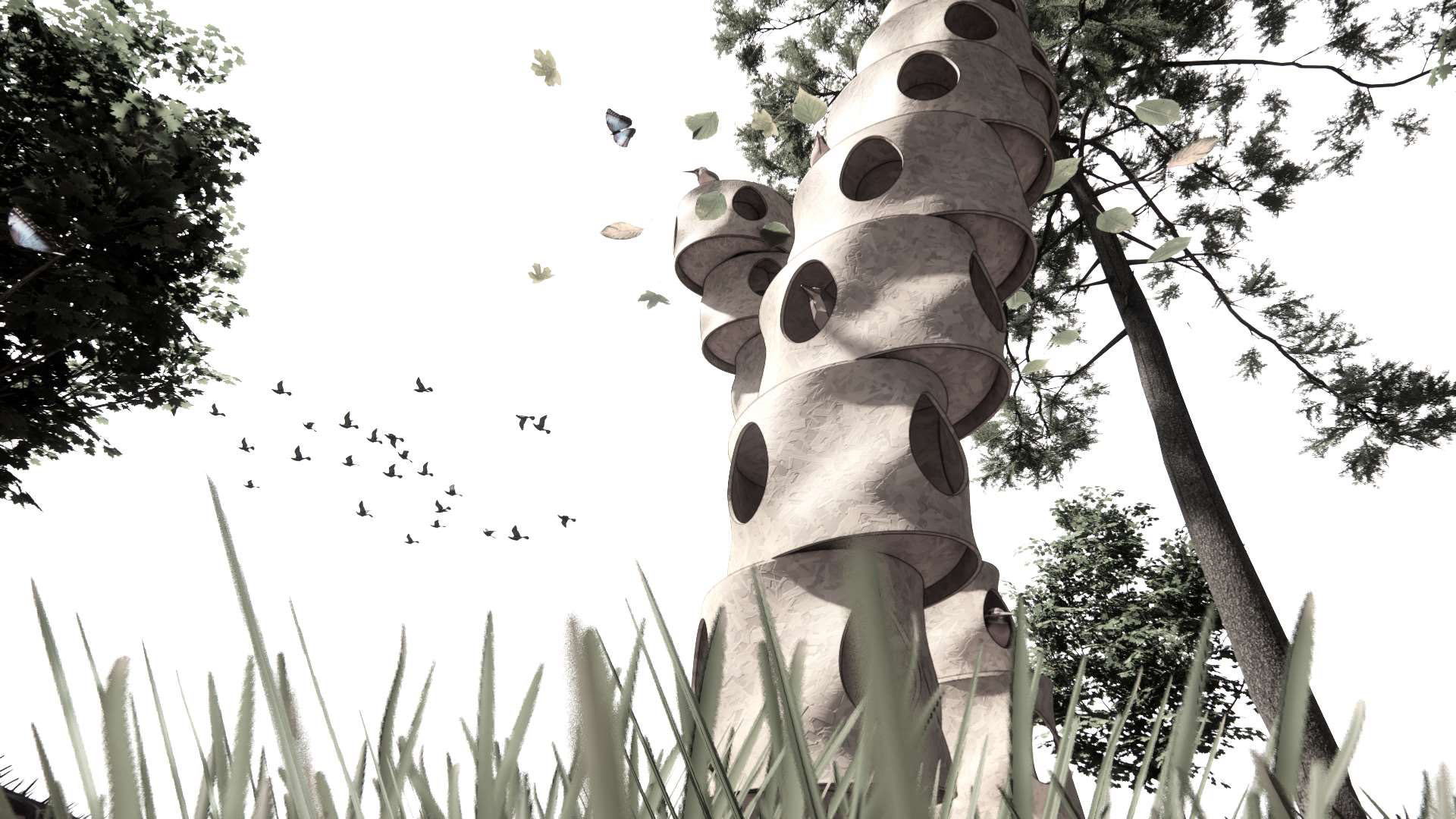
Eva Perez de Vega, Adjunct Associate Professor, Undergraduate Architecture
Ian Gordon, partner at e+i studio, and Kayla Schara, Research Assistant
Gregory Sheward, Production Facilities Manager, Robotics Operations; Visiting Assistant Professor
School of Architecture
The multispecies totem integrates native and migratory species with strategies to harness solar energy and rainwater collection. We are targeting birds mostly and other 4 main species: butterflies, spiders, bees, in addition to humans who are included through the incorporation of renewable energy.
The project is a stackable, modular, vertical structure composed of units that create various habitats for animals, insects and plants while forming a water collecting funnel and solar energy for human needs. With monitoring cameras and sensors, it will be a means to collect data on the environment and on bird behavior. This work expands on research into avian species, which started by designing Birding Totems, to create awareness of the enormous loss of avian life caused by collisions with buildings: a staggering 90 thousand birds are killed only in NY State during a single migratory season. On any given day, around downtown one can see hundreds of birds dead on the streets in lower Manhattan. This project will be part of the annual Cornell Lab of Ornithology NestWatch and Feeder project.
The project is designed to accompany human architectural and landscape projects, such as within a garden or adjacent to a building. Its form aims to be visually interesting as an aesthetic sculptural object, while being carbon positive and not invasive to local ecosystems. Rather than invading more-than-human (“animal”) habitats it aims to acknowledge and give space to new animal habitats that might have been disturbed by previous human intervention.
Our totems are a recognition that every human intervention in the environment will affect the species and ecosystems present to that environment. It aims to “give back” to the more-than-human communities that architecture replaces by being typically very human-centric. The structure would be an addendum to an existing building, or a backyard or garden. In multiplicity, repeated and configured along a site, its overhanging canopy can connect to that of others to create an outdoor enclosure, or gazebo. It is composed of self-supporting modular units with a tubular structural core that when stacked create a column-like “totem” with a water-collecting funnel and solar panels at the top of the canopy.
The totem is also an investigation in techniques of digital fabrication using a robotic arm as a large-scale PLA extruder for prototyping. We are also engaging hands-on testing of 3d modeling techniques with materials such as hempcrete (a bio-composite of hemp husks and lime) which is naturally antibacterial and will protect the habitats from rot. It has a very low carbon footprint and is effectively a carbon sink by sequestering carbon.
